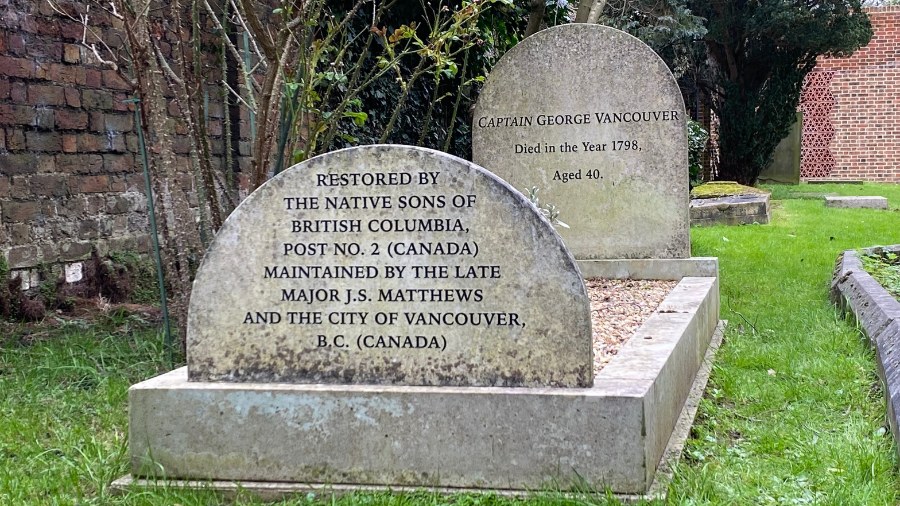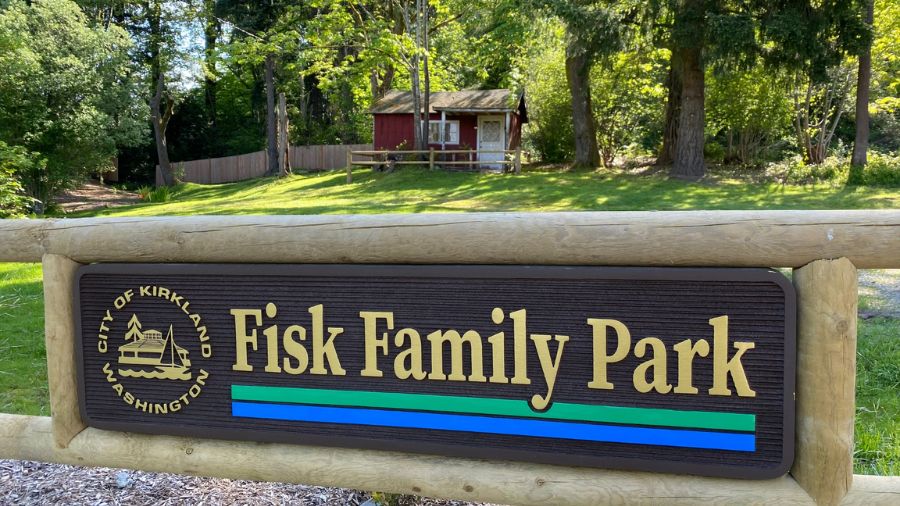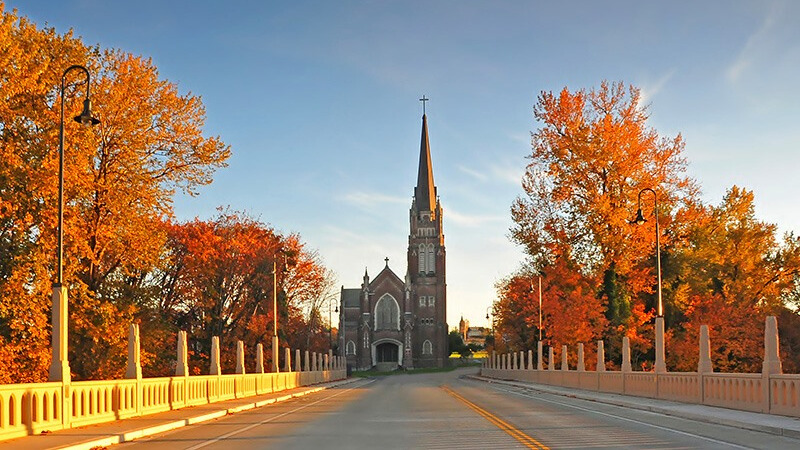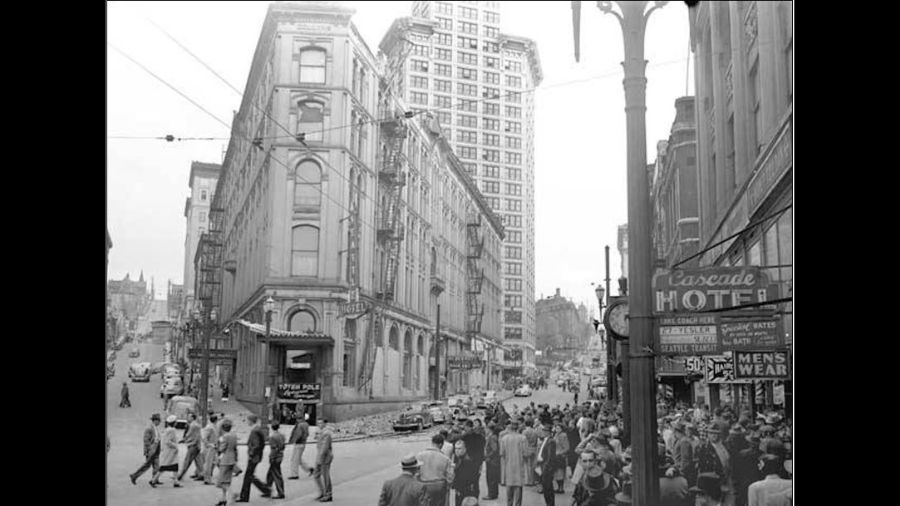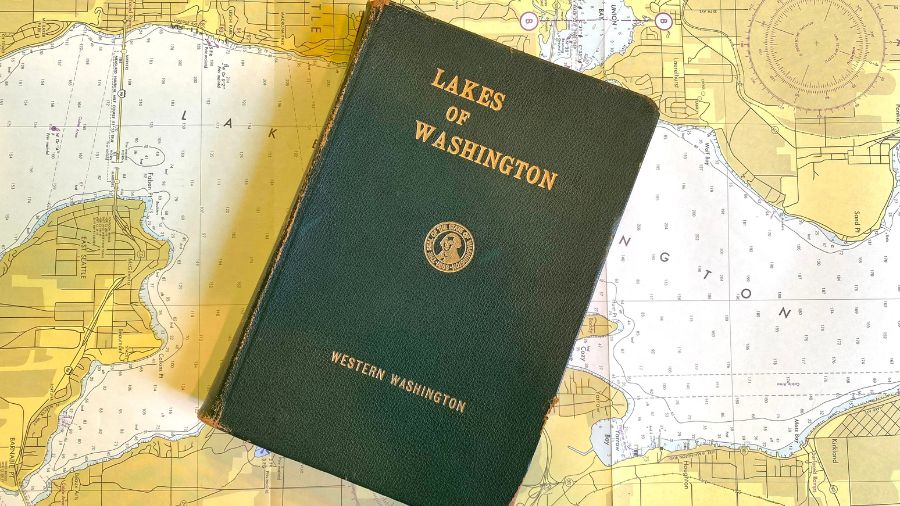All Over The Map: Cape Disappointment 2, Visitors 0
Jan 21, 2022, 9:30 AM | Updated: 1:17 pm

Detail of what's now known only as Cape Disappointment, but was also called "Cape Hancock" by Robert Gray, perhaps in honor of New England's John Hancock, from an 1851 American nautical chart. (NOAA Archives)
(NOAA Archives)
A forgotten missionary really wanted to visit the Pacific Northwest, and especially the Columbia River, nearly 200 years ago.
In the early weeks of 1829, a Presbyterian missionary stationed in Hawaii named Jonathan S. Green was making plans for a long trip. He was from Connecticut, and had been sent with his wife to what was then called The Sandwich Islands just several months earlier in 1828. The organization that sent the couple was the American Board of Commissioners for Foreign Missions (ABCFM), the same group which, less than a decade later, would send missionaries Marcus and Narcissa Whitman to the area around what’s now Walla Walla.
From the time of their arrival in the early 1820s, the ABCFM missionaries in Hawaii had been hearing about the wonders of the Northwest Coast from fur traders aboard ships that stopped off there. The way the wind and currents work, any sailing ship coming to or from Cape Horn would naturally use Hawaii as a rest stop.
Based on what they heard from their maritime visitors, it seemed to the missionaries on the ground – and to leadership back at headquarters in New England – that the Indigenous people all along the Northwest coast – from what’s now Southern Oregon all the way to Alaska – were a logical next target for missionary activities, including religious conversion.
Jonathan Green either chose or was assigned the task – that’s not clear – of checking things out. After less than a year in Hawaii, Green managed to get passage on a “barque,” or small sailing ship, called Volunteer. The Volunteer sailed from Honolulu on Feb. 13, 1829. About four weeks later, they sighted land. The date was March 10, and the Volunteer was near what’s now Sitka, Alaska, but in those years was capitol of Russian America, which was called New Archangel. Jonathan Green was received there by the highest ranking Russian official, who Green described as “Governor Peter Chesticoff.”
We know about Green’s voyage and his experiences ashore because he took fairly detailed notes about what he saw and who he spoke with. He described Indigenous people and their customs and dress, and wrote down hundreds of words in the native languages he heard. Green’s journal was published in a minuscule run of 160 copies in 1915. The book is called “Journal of a Tour on the North West Coast of America in the Year 1829: Containing a Description of a part of Oregon, California and the North West Coast and the Numbers, Manners and Customs of the Native Tribes;” it’s considered an early if somewhat amateur anthropological resource for those who study Indigenous cultures of the Northwest Coast.
Though he availed himself of opportunities to explore and understand the area around Sitka – called “Norfolk Sound” in those years – Green was intent on getting farther south. The missionary leadership and Green himself were particularly taken with the possibilities of missionary work in what’s now Washington and Oregon, in particular, the area around the mouth of the Columbia River. Green appears to have been aware that in 1829, the “Oregon Country” was jointly occupied by the British and the Americans; he writes of the value of choosing new missionary territory – and a place for a new “colony” – that will ultimately lie within the boundaries of the United States.
“Somewhere in the vicinity of the Columbia River such a colony, I doubt not, would find a salubrious climate, a fertile soil, and ultimately a country of great importance,” Green wrote.
It’s not clear if he was aware that the Hudson’s Bay Company (HBC) had already begun to establish something of a “colony” at Fort Vancouver in 1825; during his 1829 voyage, Green visited at least one HBC post not far from New Archangel.
Along with the political realities, reports from seafarers made the Columbia River and the Indigenous people there seem more appealing than what Green was witnessing firsthand farther north; his writings are a catalog of abuses of the Indigenous people by Europeans and Americans, as well as what might have been typical Indigenous cultural mores. Either way, he makes no attempt to hide his sadness or even disgust. On May 1, 1829, Green wrote, “What evidence have I that this is a polluted, ruined world! The exhibitions of heathenism which I witness daily are painful, but they are not so heart-rending as the scenes which are here acted by men from Christian countries.”
As much as Green desired to reach his personal promised land, for all that spring and for much of the summer he was at the whim of Captain Taylor – he was a mere and mostly extraneous passenger aboard the Volunteer. But, having Green on hand came in handy when a knife and gun fight broke out aboard the ship (pitting sailors versus Indigenous people), and Green, though he had no experience, was enlisted to care for a crewmember who had suffered a gunshot wound.
The Volunteer was operating in and around what was then called the Queen Charlotte Islands, but what’s now called Haida Gwai. Green went ashore at multiple locations, but the ship kept returning to New Archangel – including when that wounded crewmember needed medical care – and Green repeatedly visited the Russian Governor Chesticoff, with whom he appears to have struck up something of a friendship.
Finally, in late August, the Volunteer headed south toward where Green really wanted to go ashore. But when the day came that Puget Sound was oh-so-close, that darned Northwest weather just wouldn’t cooperate.
“We endeavored to enter the Straits of Juan de Fuca,” Green wrote, “but on account of an easterly wind, did not succeed.”
Farther south, Green could at least still look forward to his visiting his beloved Columbia River.
“We then made for the Columbia River, spent several days in the latitude of the river” and saw land, Green wrote, “in the immediate vicinity of the country I so much desired to visit.”
“Cape Disappointment and Point Adams, between which land the river empties,” Green continued, “we distinctly saw, and for several hours were within a few miles of them.”
But this was the still-to-this-day dangerous Columbia Bar – the infamous “Pacific Graveyard” – and “distinctly” seeing, it turns out, was as close as poor Jonathan Green would get.
“Captain Taylor was no less anxious than I was to enter the river, but after arriving so near, we reluctantly abandoned the idea. So tremendous was the swell from the southwest, that Captain Taylor judged that it would break in twenty fathoms of water,” Green wrote.
“The danger of crossing a sand-bar having four fathoms only of water, at such a time, is obvious,” he continued – it’s a little hard to understand exactly what he means, but it’s clear that Captain Taylor believed it wasn’t safe to try and enter the river.
“I am fully of the opinion that we could not have succeeded, had we attempted it,” Green wrote, sounding as if he might still be trying to convince himself to believe his own claims.
Thus, it seems like Washington’s Cape Disappointment – named in 1778 by Captain John Meares, who’d failed to even find the river – lived up to its reputation. The disappointment was likely raw and real 51 years later for Jonathan Green.
Returning to The Sandwich Islands after stops in California, Green lived a long life and settled on Maui. He became a promoter of agriculture, and was known there by some as the “Apostle of Wheat.” Green died on Maui in 1878 at age 81. He did make at least one more trip to the mainland in the years after 1829, but it’s unclear if he ever visited the Pacific Northwest.
Meanwhile, other groups had their eye on the Northwest for expanding missionary activities. The Methodist Jason Lee is credited with being the first to settle in what’s now the Pacific Northwest, establishing a mission in the Willamette Valley in 1834.
You can hear Feliks every Wednesday and Friday morning on Seattle’s Morning News, read more from him here, and subscribe to The Resident Historian Podcast here. If you have a story idea, please email Feliks here.


